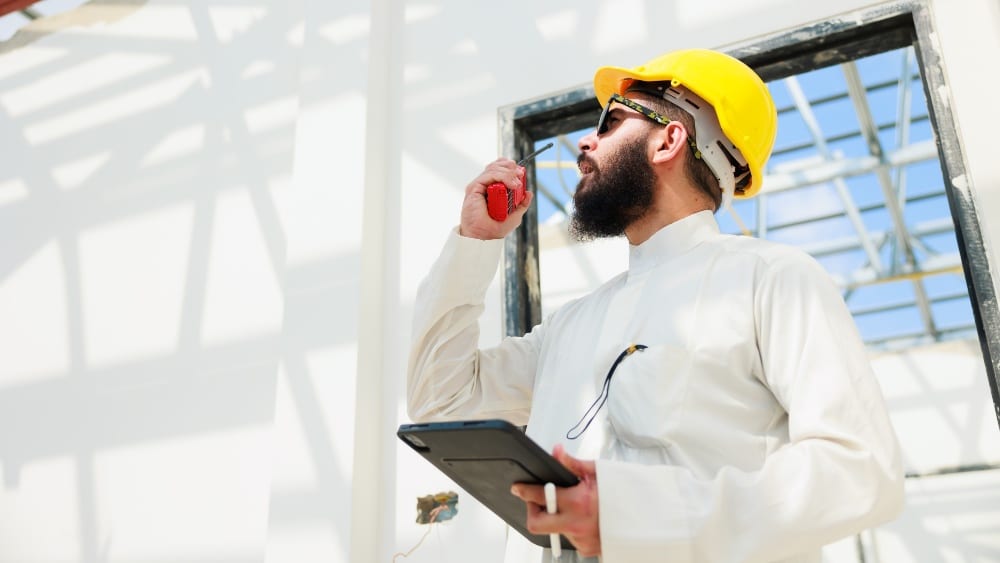Faheemuddin Mohammed, Senior Certification Specialist – Electrical at Emirates Safety Laboratory, explores the technologies shaping electrical safetyin high-rise buildings, industrial facilities and commercial complexes
In the rapidly expanding cities of the Middle East, where high-rise towers, sprawling malls and industrial facilities define the skyline, electrical fire safety is more vital than ever.
With rising temperatures, complex infrastructure and an influx of new technologies, the region requires advanced, adaptable fire protection systems that extend beyond traditional alarms. With the increasing reliance on electrical fire safety devices, fire detection, warning and response mechanisms have undergone significant evolution.
Fire alarm systems, voice evacuation systems, emergency lighting, aspiration detection, gas detection and linear heat detection are just a few of the essential pieces of equipment used to mitigate fire risks in the region. Understanding how these systems operate, their challenges and the innovations to reshape fire safety are key to improving safety protocols.
Designing fire safety for the region’s harshest environments
Fire safety systems are not a one-size-fits-all solution, especially in the Middle East. The adaptability of these systems to the region’s diverse infrastructure – ranging from high-rise skyscrapers in cities like Dubai and Riyadh to industrial facilities and large-scale residential compounds – provides a reassuring sense of security.
These systems vary depending on the environment, whether in buildings, transportation networks, or industrial plants. Regardless of the specific design, all these systems share one core goal: to detect, alert and protect. Faheemuddin Mohammed
In buildings, the most common fire safety system is the fire alarm system, which typically includes heat detectors, smoke detectors and manual call points. These components work in harmony to detect fire or smoke in its earliest stages. Once detected, the system activates an alert, providing the necessary time for evacuation before the fire can escalate, significantly reducing the risk of injury or loss of life.
Voice evacuation systems, which have become increasingly critical in modern fire safety protocols, play a significant role in reducing confusion and ensuring that people can safely navigate evacuation routes.
These systems not only trigger alarms but also provide clear, understandable evacuation instructions through pre-recorded or live announcements. This clear messaging is especially vital in large buildings and towers, reassuring occupants that they can respond swiftly and safely in the event of an emergency.
Emergency lighting systems play a crucial role in guiding individuals to safety during evacuations, especially in situations where visibility is compromised due to smoke or power outages. This emphasis on preparedness and security reassures us that even in challenging conditions, these systems, powered by backup batteries, ensure that escape routes are illuminated, enhancing the chances of a safe evacuation.
Advanced detection: Aspiration, gas and linear heat technologies
In the Middle East, where environments such as cold storage facilities, clean rooms and data centers are commonplace, early detection of fire risks is crucial. Aspiration detection systems utilise air-sampling technology to identify smoke particles at the earliest stages, much sooner than traditional smoke detectors. These systems can prevent significant damage to high-value assets and mitigate risks to human life by identifying fires before they spread.
Gas detection systems are especially critical in environments where gas leaks pose a significant threat, such as industrial plants or underground facilities, food and beverage to chemical production and wastewater treatment. Faheemuddin Mohammed
These systems detect hazardous gases, such as carbon monoxide, methane and hydrogen, providing early warnings and enabling swift action to prevent dangerous accumulations that could result in explosions or fires.
Linear heat detection (LHD) systems are also crucial in large, open spaces, such as tunnels, conveyor belts and industrial plants, which are common in the region. LHD systems utilise cables to detect temperature changes along their length, enabling the precise identification of heat sources. This capability is advantageous in situations where traditional fire alarm systems might not be effective.
Tackling harsh conditions: Maintenance in the Middle East
Despite their importance, fire safety systems in the Middle East face several maintenance challenges. The region’s harsh climate, with its extreme heat and humidity, can significantly impact the performance and longevity of these systems.
High temperatures can cause sensor degradation, while dust, sand and humidity can trigger false alarms or damage components. Additionally, the reliance on backup batteries in emergency lighting and fire alarm systems necessitates regular checks and replacements to ensure optimal performance, particularly during power outages that are more frequent in desert climates.
As the complexity of fire safety systems increases, especially with the integration of wireless communication and innovative technologies, maintenance becomes more challenging. Ensuring seamless integration of various systems, from voice evacuation to gas detection and emergency lighting, requires careful planning and expert knowledge.
Fire safety professionals play a crucial role in this process, conducting regular inspections and timely system calibration to prevent malfunctions and maintain operational readiness during emergencies. Faheemuddin Mohammed
The future is now: AI, IoT & smarter systems
The integration of the Internet of Things (IoT) and Artificial Intelligence (AI) has enhanced fire safety systems in the Middle East. IoT-enabled devices allow real-time monitoring, while AI algorithms analyse data to predict potential fire risks and reduce false alarms.
AI-powered systems can autonomously respond to detected fire hazards, making quicker decisions than humans in some situations. Additionally, AI aids in predictive maintenance, identifying issues before they lead to system failures, which is particularly beneficial in harsh climates.
Cloud-based fire safety solutions offer numerous benefits for large and complex infrastructures in the Middle East. They enable remote monitoring of systems, provide a platform for data storage and analysis and facilitate informed decision-making. These features ensure continuous and effective fire safety, even in the most challenging environments.
Emirates Safety Laboratory’s contribution to fire safety in the Middle East
The Emirates Safety Laboratory (ESL) plays a crucial role in enhancing fire safety systems throughout the Middle East, particularly in the Emirate of Dubai. As a contributor in testing and certification, ESL ensures that the fire safety products deployed across the region meet the highest standards of performance and reliability. The laboratory conducts rigorous testing and certification processes to validate the effectiveness of fire safety systems,
Moreover, ESL is actively involved in developing standards for new systems, including wireless connectivity for interconnected detectors, particularly in villa developments. As these systems become more prevalent, they must operate seamlessly in complex environments, such as high-rise buildings, industrial plants and sprawling commercial complexes.
ESL’s work in establishing these standards ensures that new technologies are integrated safely and effectively, with compliance to regulations that prioritise both user safety and system performance. Faheemuddin Mohammed
In addition to creating standards for emerging technologies, ESL is working to develop comprehensive guidelines for products already in the market that lack standardisation. This initiative is particularly significant in a rapidly growing region where many new fire safety products are entering the market. By establishing and enforcing standards for these products, ESL helps eliminate substandard or non-compliant products that could compromise safety and quality.
Beyond technical contributions, ESL is also dedicated to raising awareness about fire safety in the Middle East. Through informative articles, social media posts and educational campaigns, ESL disseminates knowledge about the importance of reliable fire safety systems, the latest advancements in fire safety technology and the necessity of compliance with local and international safety standards. These efforts help both businesses and consumers make informed decisions, ensuring that fire safety is a priority in every infrastructure development.
Lastly, ESL plays a crucial role in filtering the market by identifying and removing non-compliant products or systems working in partnership with authorities in Dubai to support enforcement. Through their testing and certification services, ESL helps ensure that only high-quality, reliable products reach the market, significantly reducing the risks associated with poor-quality or ineffective fire safety systems.
As cities across the Middle East continue to expand, embracing smarter, more resilient fire safety systems will be essential. With forward-thinking organisations like ESL leading the charge, the region is well-positioned to lead globally, setting new benchmarks in fire protection, infrastructure resilience and public safety.
By: Harnessing smart technologies for safer infrastructure, with Emirates Safety Laboratory






